As responsible travelers evolve, so do the stories we share.
This article is part of our living archive — trusted content we continue to care for.
First published on November 6, 2014 • Last updated on February 16, 2022.
So you have two weeks of vacation and want to combine Peru and Bolivia? Yes, it is completely doable!
When I originally wrote this article back in the day, I was a military wife living in Buenos Aires, Argentina. My husband was on an exchange assignment of about 15 months. We had yet to know that we would be moving to Ecuador for three years! In short, we were trying to expose our boys to as much of South America as we could afford in so short of an assignment. I also published on the DailyKos website under the pen name of AngelaJean. What follows below is an edited version of that original piece.
Two Weeks of Christmas Vacation
That means we spent our Christmas vacation, a grand two weeks, outside of Argentina. We decided on a combination trip, about a week each in Peru and Bolivia. A smattering of each country just to give us an idea of the different cultures and sites of each. Little did we know that we chose an itinerary that fit in well with our explorations of Northwest Argentina, another site of the vast Inca empire.
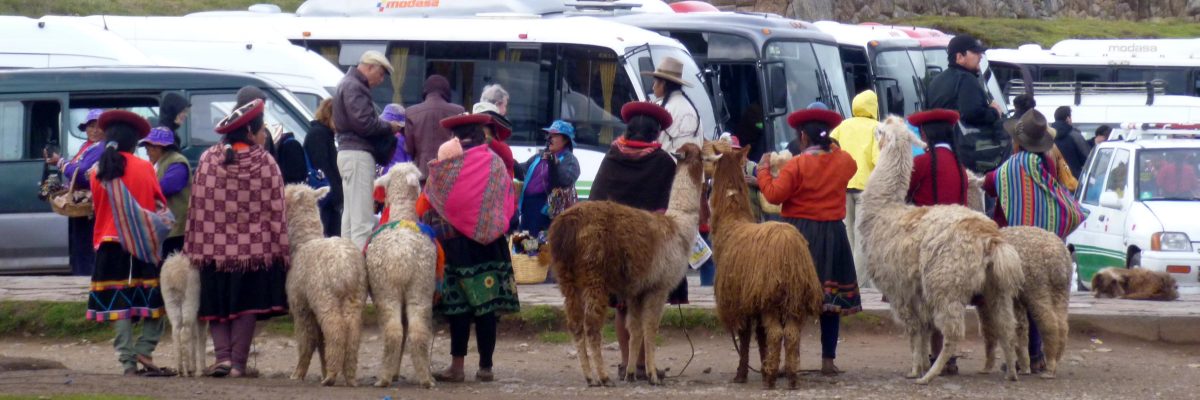
Cusco, Peru
We arrived in Cusco after a single night in La Paz, Bolivia. Since there are no direct flights from Buenos Aires to Cusco, we decided a night in La Paz would help acclimate us to the higher altitude. Both my youngest son and I suffered from altitude sickness in Jujuy, Argentina and we wanted to give ourselves any extra help before tackling the Inca Trail in a couple of days. Instead, it was my husband and myself that felt the altitude the most while in Cusco.

We had two days to acclimate our bodies and get to know the local area. We were able to visit the Pre Columbian Art Museum, the Incan sites of Sacsayhaumán, Puca Pucara, Tambomachay, and Q’engo, as well as the colonial sites built by the Spaniards, the Plaza de Armas, the main Cathedral, and the Church of Santo Domingo which was built directly over the Incan site of Qoricancha. The mixture of Spanish culture, particularly Catholicism, and local Quechua tradition, is evident everywhere.

We explored with a combination of tour guides and on our own. Our guide, Romelo, taught us more than we could have learned on our own, including some unique opinions on how the ancient Incans built many of the sites and our own explorations gave us a chance to discover the more hidden corners of the city.
Cusco is also a great place to try Peruvian food. We drank the famous Chicha Morada and some of us ate the guinea pig. We all tried alpaca and altitude sickness demanded that we each try some of the local soups (all excellent!) for at least part of our stay. They are an integral part of the acclimatization ritual. My favorite meal might still be the hot chicken, egg, cheese, and fixings sandwich I had near midnight from a street vendor near our hotel.
Read More About Our Trip To Cusco: Part 1 and Part 2
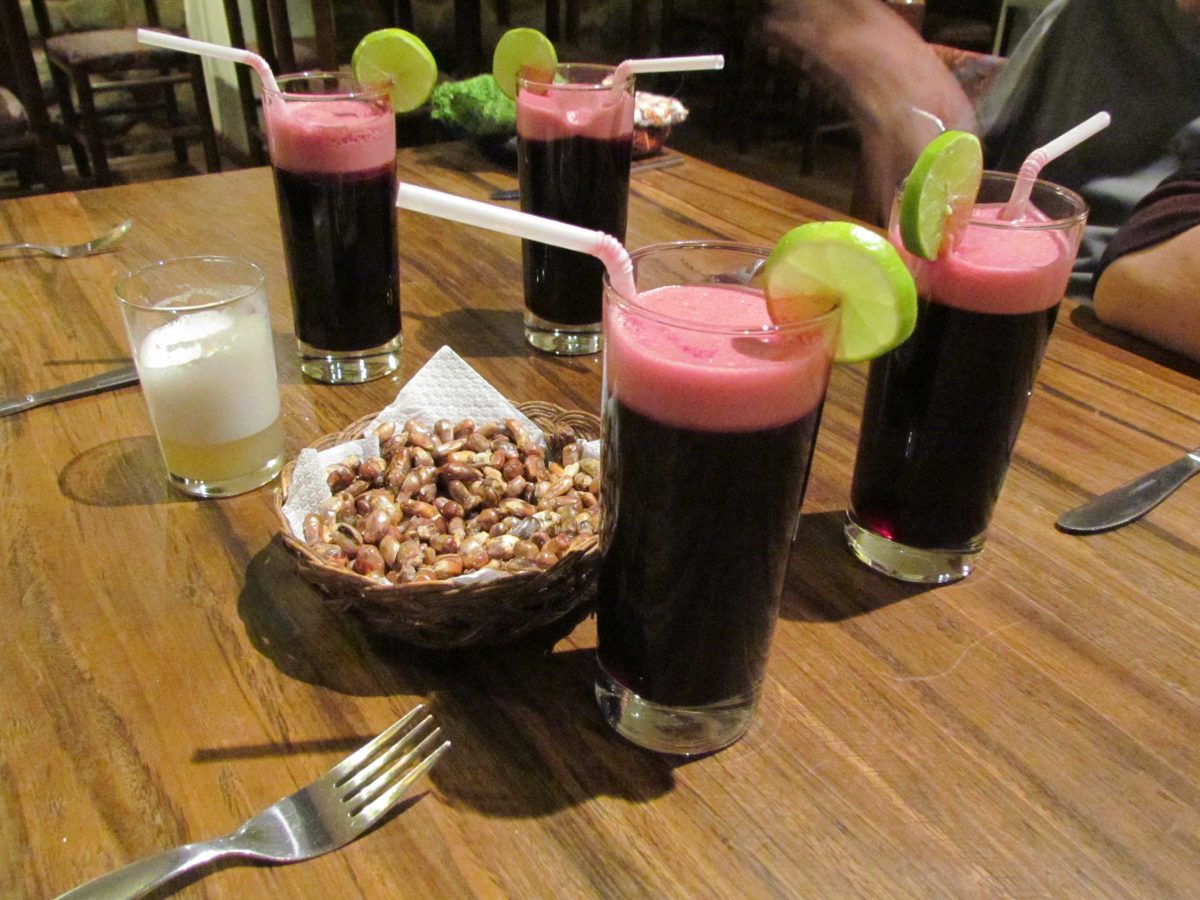
4 Day Inca Trail Hike
Somewhat acclimated, we headed out to hike 4 days on the Inca Trail, from Chillca to Machu Picchu. As is common in South America, we booked our entire trip minus La Paz through one travel agent, Peru Interact, who then booked us with an agency-specific to the trail, XTreme Tourbulencia and our most excellent guide, Fredy. Fredy provided us with more information than I can share in a lifetime but I will do my best – I hope to share some history, some politics, some great photos, and our own unique experience on the trail. By the end, some of you may doubt your ability to ever hike this trail while others will be inspired to give it a try. Some of you will wonder what all the fuss was about, I’m sure!
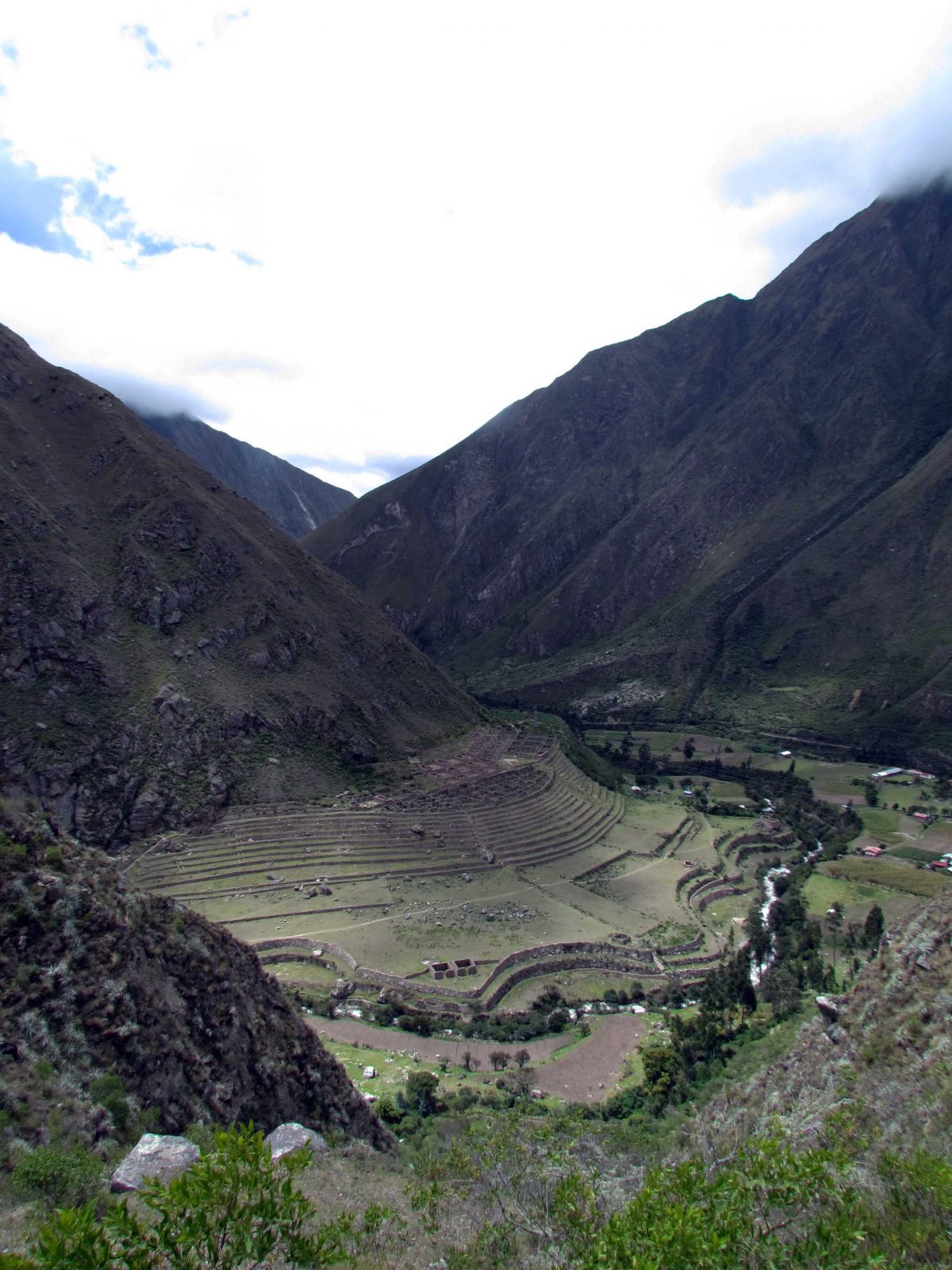
1st Day: Cusco – Km 82 – Wayllabamba – Yuncachimpa
We will leave Cusco (3350m/10990f) at 5:30 am by tourist bus to and head for the Sacred Valley of the Incas. Before we reach our starting point km 82, we make a short break in Ollantaytambo for having the option to get breakfast. The official beginning of the Inka Trail is called km 82. Here we will meet the rest of the group and take care of the registration facilities. After crossing the Rio Urubamba (2200m) we will start the legendary Inca Trail. The first day the trail is easy to walk and a good warm-up for the following days. In Miskay we’ll have lunch at a small riverbank while getting some information about the archaeological complex of Llactapata. After that, we will continue our hike to Wayllabamba (3100m/10170f) and ascend to Yuncachimpa (3300m/10826f), the camping site we will spend the night in. From here, we have a great view of the mysterious Nevado de Verónica.
Level of difficulty: normal (easy)
Hiking time: 5-6 hours
Total distance: 11km approx.
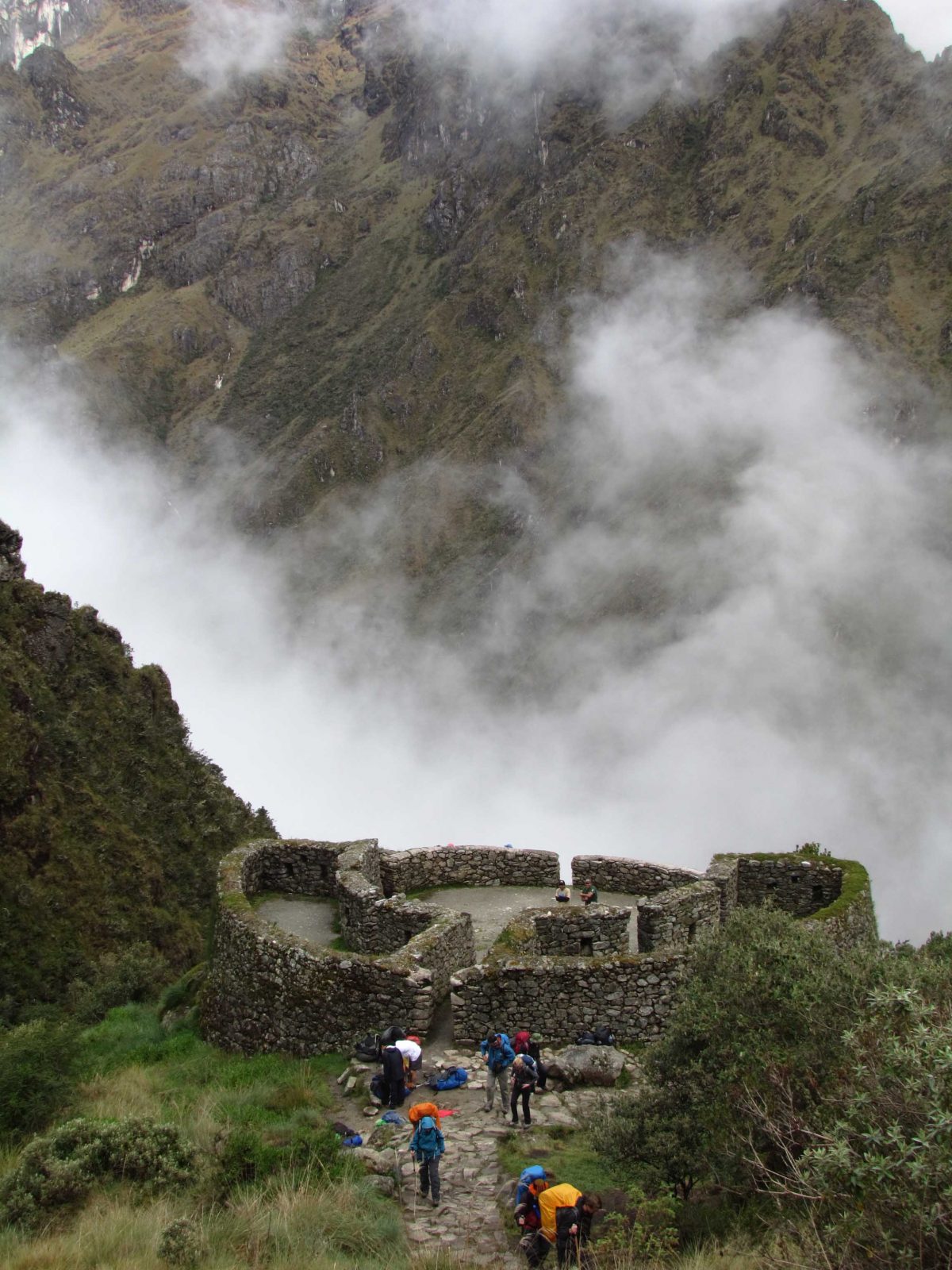
2nd Day: Yuncachimpa – Llulluchapampa – Warmihuañusca pass – Pacaymayu – Runkurakay pass – Chaquicocha
The second day is the ‘Free-Hike-Day’; that means, that everybody should walk in his/her own pace – of course, you will meet during the small breaks or see each other while beating the stairs. Early in the morning the trail first goes through the Valley of Llulluchapampa (3850m/12631f). The first 3km are step – enjoy the humid woodland and the water sounds. From Llulluchapampa follow the way for 2-3 hours until you crest the highest point of this section, the Warmihuañusca (Dead Woman Pass) (4200m/113780f). This climb is known as the most difficult part of the Inca Trail. After a short break at the summit, you continue your hike down with a long and steep descent to the river Pacamayo (Sunrise River) towards the Runkurakay pass (3050m/10007f) until you reach our camping site called Chaquicocha at (3650m/11975f). Here you can relax your body from the tough day while enjoying an amazing view over the mountains.
Level of difficulty: challenge
Hiking time: 7-8 hours
Total distance: 15 km approx.
Read About Day 2 on the Inca Trail and my story of the Dreaded Dead Woman’s Pass
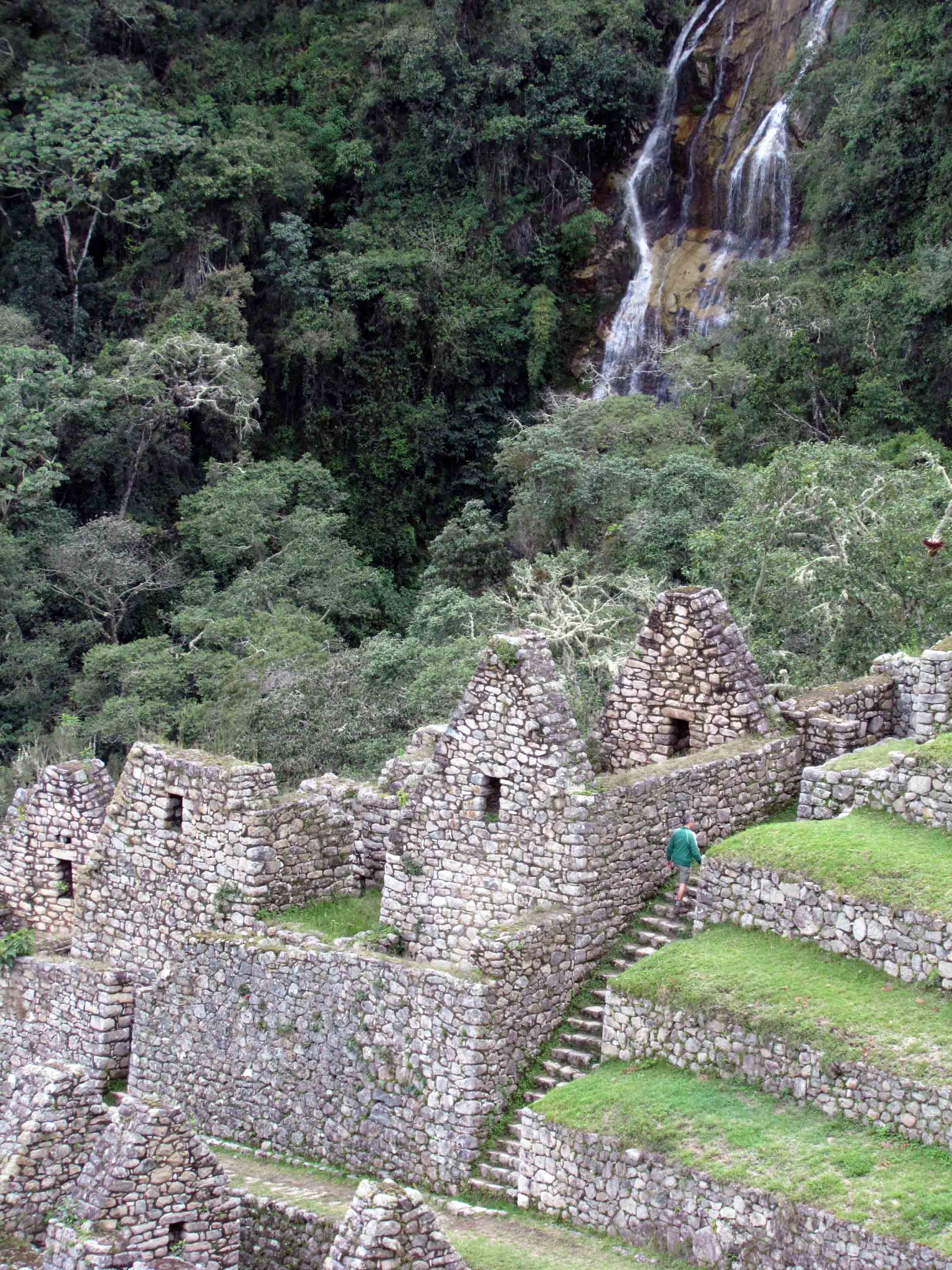
3rd Day: Chaquicocha – Phuyupatamarca – Wiñayhuayna
The third day is the most beautiful one. You can notice a change in the eco-system while walking to the tropical forest of Wiñaywayna. We will pass two small lakes at the top of the second pass (3950m). It’s a gentle climb through the beautiful cloud forest and a small Inca tunnel before the third pass (3700m) offers a grand view over the Rio Urubamba Valley. The nearest settlement is named Phuyupatamarca/”Town above the clouds” (3600m/11811f). A well-preserved site with long chain Inca baths where one can enjoy impressive ancient engineering. We pass another Inca Tunnel before visiting the ruins of Wiñaywayna/”Forever young” (2650m/8694f). The Inca stairs change into a zigzag trail until you reach a red-roofed white building, our last camping site, and also a location with hot water (S5) and bottled drinks.
Level of difficulty: normal, unforgettable (easy)
Hiking time: 5-6 hours
Total distance: 10 km Approx.

4th Day: Wiñayhuayna – Machu Picchu – Cusco
After our breakfast at 4:30 am, we will head – equipped with our flashlights – to the Inti Punku (Sun Gate) to get the first glimpse of Machu Picchu and watch the sunrise over Machu Picchu and Wayna Picchu. The last triumphal descent will take you almost one hour before we visit the citadel of Machu Picchu (2400m//7874f) around 8:00 am. You can enjoy its spiritual charm during a guided tour (about two hours) that helps you to understand the meaning and ancient use of the different buildings. After this tour you will have enough time to explore the archeological site on your own (f.ex. go to the Inca Bridge, explore the variety of buildings or climb Wayna Picchu for an amazing panorama picture). A bus takes you down to Aguas Calientes. Here you can soak away your aches and pain in the town’s hot springs (S10). We will leave Aguas Calientes in the afternoon.
Level of difficulty: normal, unique (easy)
Hiking time: 2-3 hours
Total distance: 7 km approx.
Read about Day 4 and Our Hike Into to Machu Picchu and Our Day Exploring Machu Picchu
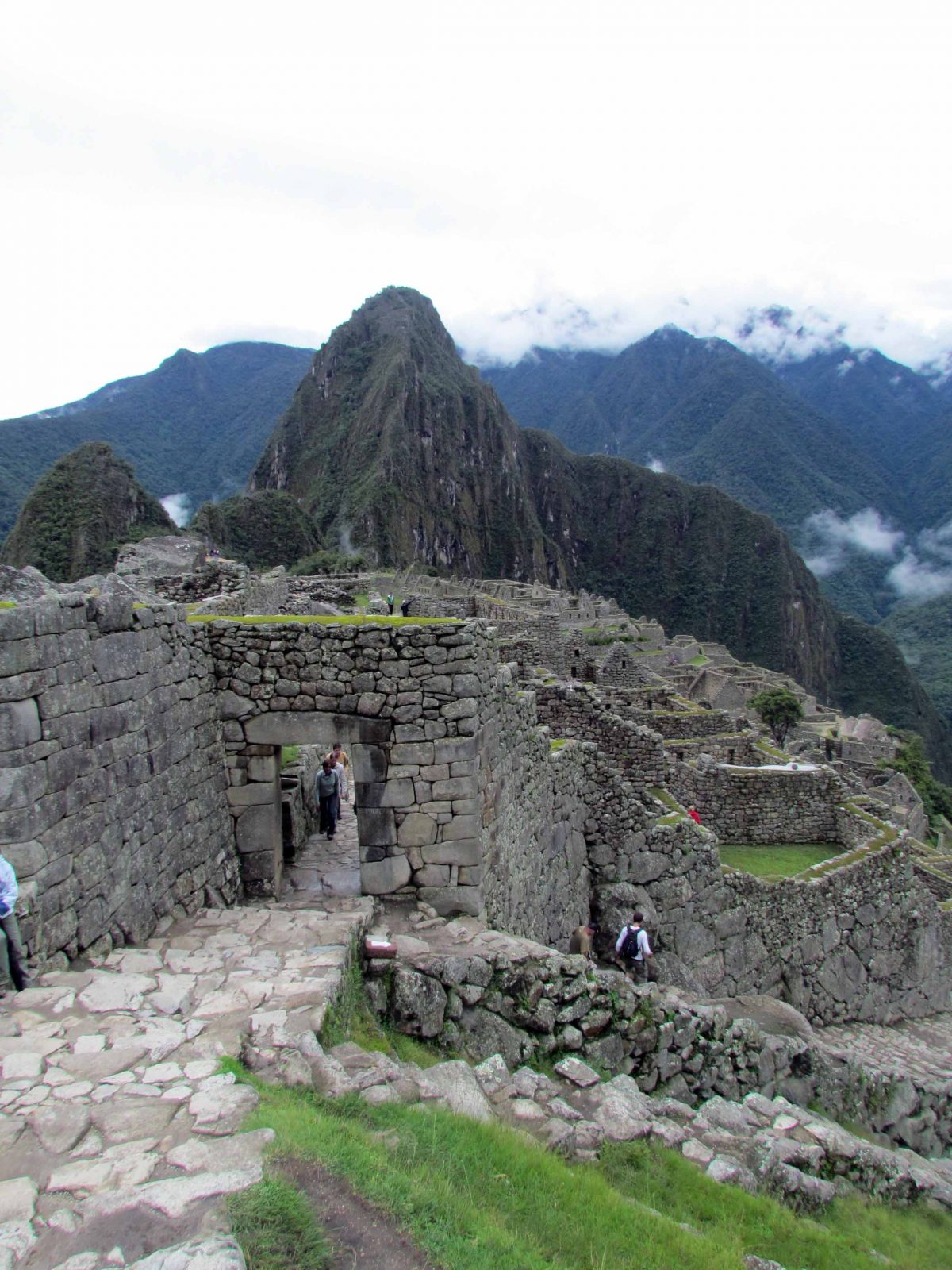
Cusco to Puno, Peru
After our epic journey to Machu Pichu, we were ready for a day of rest and wondered if any of the rest of the trip could be as memorable as the last few days. Unfortunately, as we hadn’t included a rest day, we were on a bus at six in the morning heading towards Puno, Peru. The tour took us through the heart of the Sacred Valley. Luckily, the weather decided to cooperate so that we could take beautiful photos both from the window of the bus and at some sites along the way.

We stopped at the Andahuaylillas Church to see original hand-painted murals in the process of restoration and a neighboring museum with the infamous alien skeleton made famous through the internet, drove by Pikillacta but didn’t stop, explored the Incan site of Raqchi or Wiracocha, ate lunch at a Peruvian buffet while being serenaded by Peruvian musicians, crossed the summit of the mountains at La Raya Pass (4338 meters; 14232 feet), visited a museum in Pukara (but enjoyed the Christmas Eve festivities in the Plaza even more!), before finishing our trip to Puno on the shores of Lake Titicaca. You’ll get to hear about how I finally learned to embrace my inner-tourist on this leg of our journey just as my youngest son decided that he was going to embrace a truly unique experience with altitude sickness.
Read about our Cusco to Puno Bus Ride
Learn more about Raqchi from our guest author from New Zealand, Eleanor Hughes

Lago Titicaca from Puno
Christmas Day found us in Puno, Peru with another early start to the day and a son who seemed to be recovering but wasn’t. I think it was the worst Christmas ever for my youngest but he handled like the trooper that he is and never complained as we headed out onto Lake Titicaca to visit the Floating Islands, home of the ancient Uros and the Island of Taquile, a place honored for “Masterpieces of the Oral and Intangible Heritage of Humanity” by UNESCO. The day was shrouded in rain and the boat trip cold, damp, and mind-numbingly long, but our visits included interactions with locals that made the trip worthwhile. Tourism is a major revenue source for both places but the differences in the communities and the methods they use to attract tourists are strikingly different. I want to write about the importance of tourism but the damage that the wrong kind of tourism can bring.
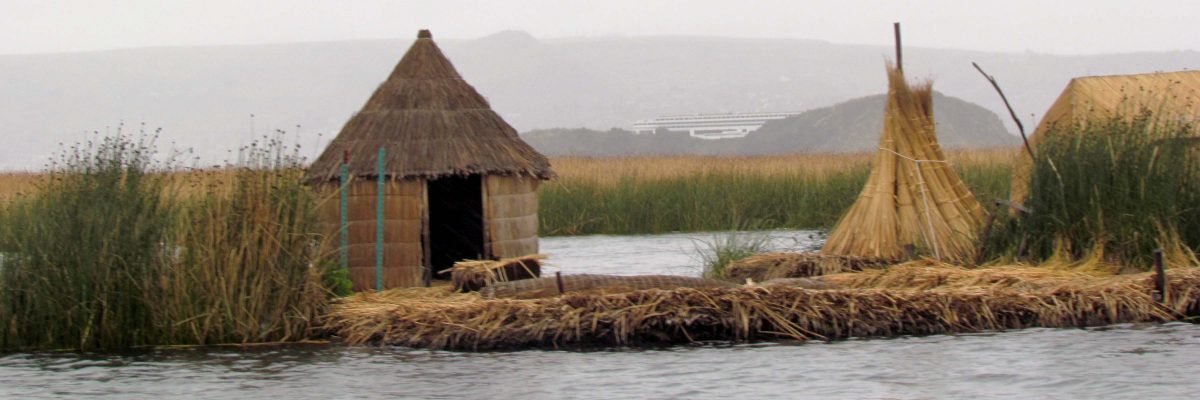
Lake Titicaca and the Isla del Sol
The following day, we boarded a bus to the border. We were about to embark on a new adventure and a new country and were hoping to leave the last of our altitude sickness behind us. We had a two-hour bus ride to the border near Copacobana (not the famous one of Brazil, but still the very well known one on the shores of Lake Titicaca! After some issues at immigration control with my husband’s passport (you’ll have to join us for a drink to get the story of why he may or may not have left Bolivia the first time we came through), we walked across the border.
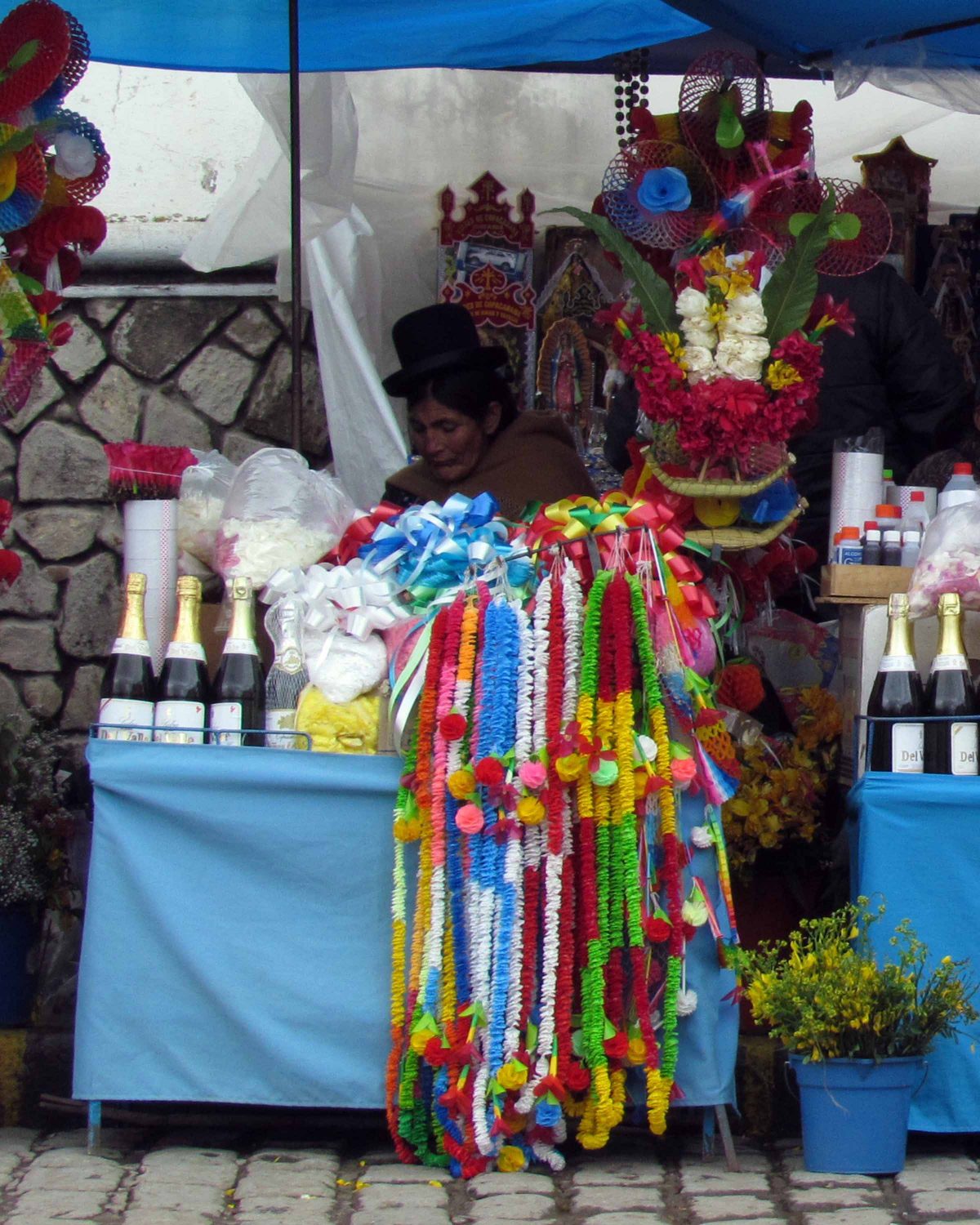
We visited the local Cathedral and watched the unique blessing of vehicles take place – yet another blending of Catholicism with local tradition that I hope to discuss in future diaries. Then we boarded our Catamaran. I say “our” because although some other passengers joined us for the first leg of our journey, only my family stayed the night. My boys got to experience what we thought it might feel like to be rich – a crew on a boat served only us. It felt a little bizarre, to say the least, especially later that evening when the local villagers came onboard to play music and show us some local dancing. We couldn’t hope that they would choose someone else to join in and each of us took a turn twisting and turning to the music of drums and pipes and guitars.
We dropped the other passengers off on a part of Isla del Sol that we would be visiting the next day. We continued around the island until we reached the community of Challapampa where we explored for the rest of the day. We were invited into the small, local museum and then two local fishermen took us in their rowboats to the far end of the island so that we could hike back across land. Our hike took us to more ruins, to astounding views of both Lake Titicaca and of the island itself, to sacred water and to sacred rocks. Our guide, Guido, taught us more about the local community, the Incan people, and the mythology of the area than I can ever share in a post, but I will do my best to share all that I can remember.
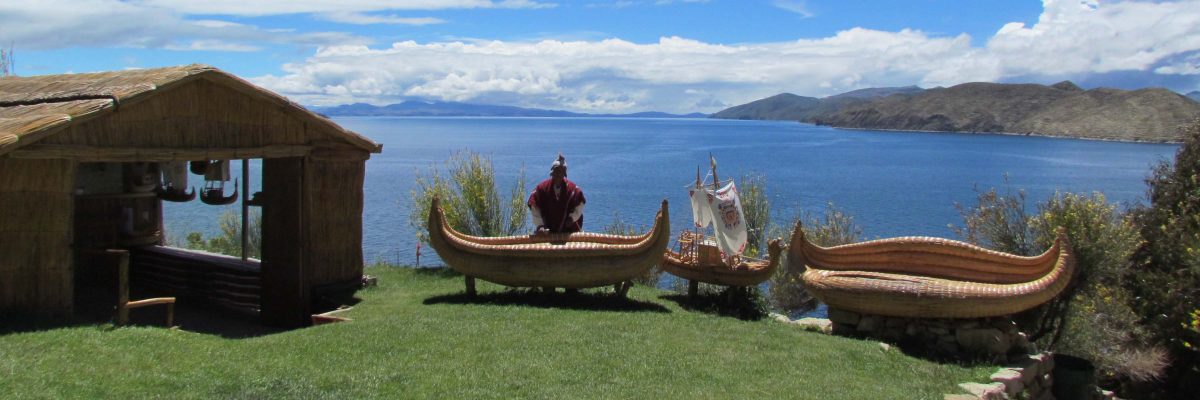
The next day, I woke early, as I was wont to do in this part of South America, and walked Challapampa as the sole tourist among working locals. It gave me a unique view of the community. After breakfast, our boat took us to Inti Wata, a living history complex built beside a community of Yamani. The complex was built by the tour company, Transturin, and included the unique opportunity to understand the local faith by participating in a ceremonial burnt offering, learning more about the construction of reed boats and the theory of how ancient South Americans and Egyptians may have been in contact, walking the multiple terraces of medicinal and food crops, enjoying the multiple flowers and the singing birds, and seeing more examples of textiles and local foods. The experience was almost overwhelming but with breaks in between the lectures and gorgeous views of the lake, the memories are burnt into my mind as some of my favorite of the entire trip.
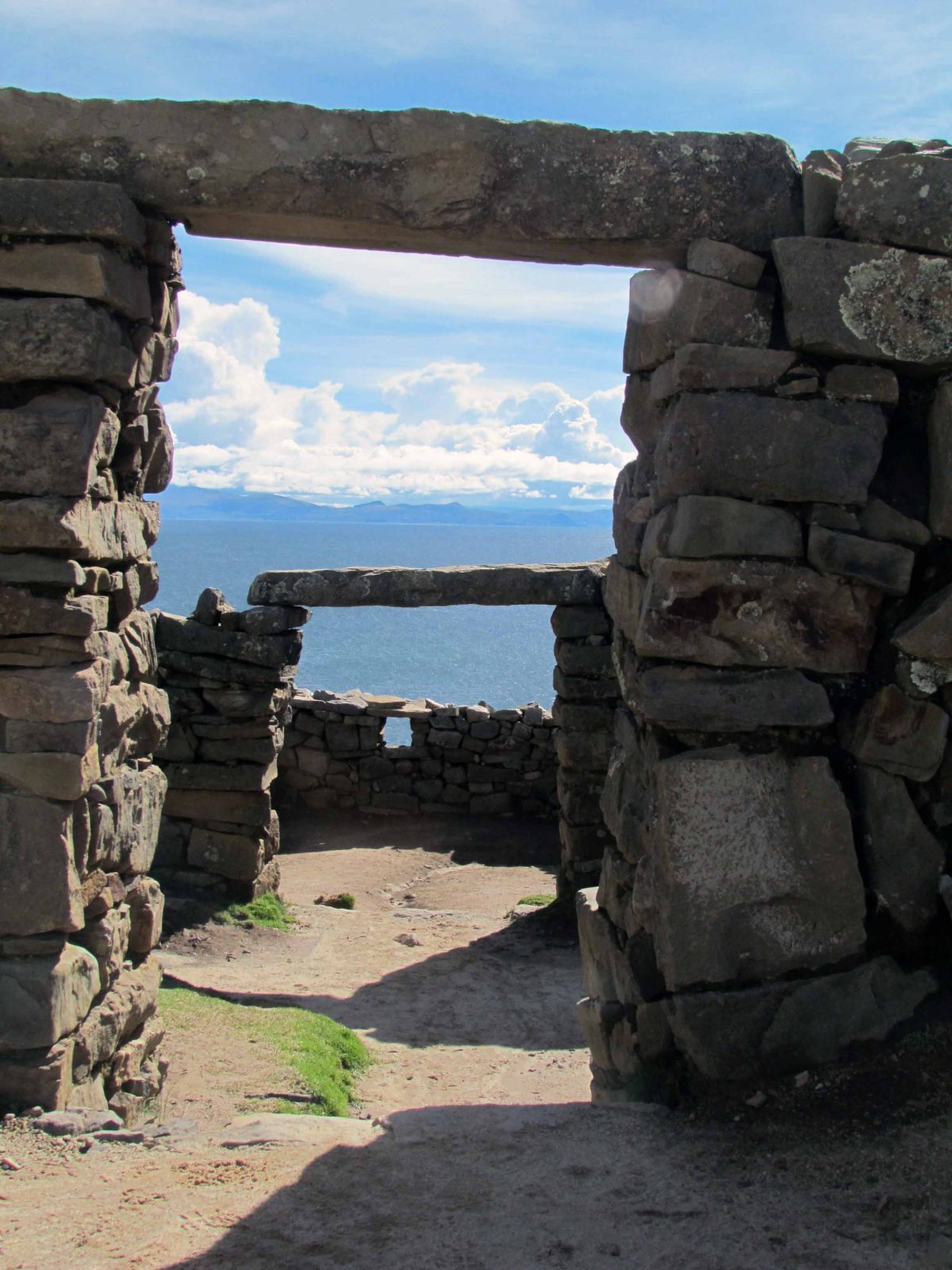
We again hiked, this time up ancient steps to the summit of this part of the island where we once again got to view Lake Titicaca in all its splendor. Later in the afternoon, we traveled two more hours by boat to reach our port, once again find some rain, and head towards the city of La Paz. Isla del Sol lived up to its name for us!

La Paz, Bolivia
The last days of our trip were spent in one of the two capital cities of Bolivia, La Paz. It was our second visit. The first happened on our way through to Cusco when we managed to spend less than 12 hours in country. We had arrived in the dark and left in the dark, so we had seen very little of the city. I remembered lots of political artwork on the walls of the highway and a small market running late into the night near our hotel.
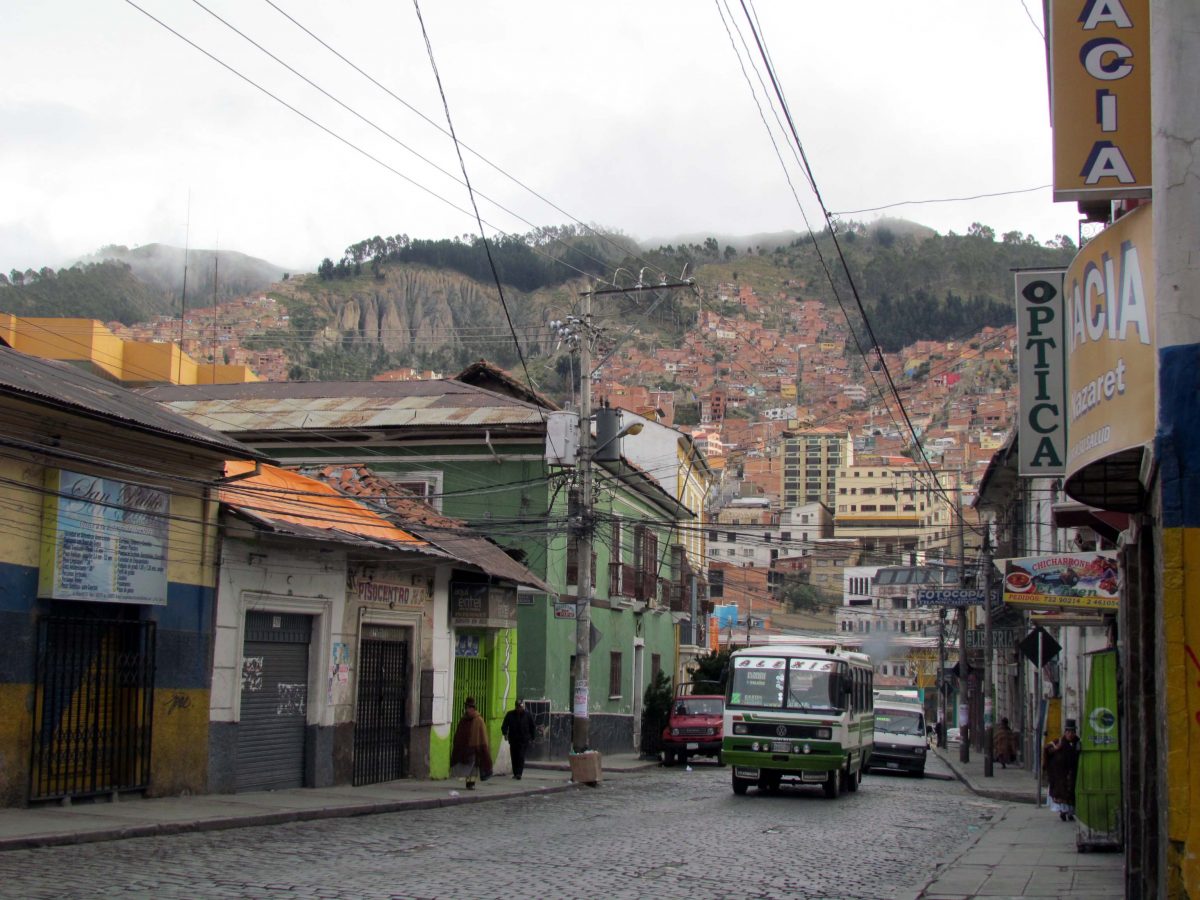
Our arrival this time was at dusk so we didn’t see much more until the next day. Then we could really explore! La Paz is very different from Buenos Aires but I think I liked it all the more for the differences! Travel for us is all about finding new experiences and we definitely found that in La Paz! I will be writing about politics and Evo Morales, the love of the people for their president and the display of the indigenous peoples’ flag in every location the Bolivian flag flies. During our days in La Paz, we noticed that it was rare to see an American restaurant, unlike the hundreds of McDonald’s in Buenos Aires, and, upon our return, was not surprised to read that Bolivia is McDonald’s free.

In La Paz, we managed without a tour guide except for a short visit to the Valley of the Moon. Honestly, we could have done without there as well but not being ready to tackle the unique system of buses left us with few options. But walking about the city was easy. We explored both the more touristy artisan district and the Mercado de las Brujas (the Witches’ Market) as well as the more local shopping district. We attempted to visit multiple museums and failed as many were closed. The National Art Museum, however, was open and was spectacular, one of the better art museums we have visited since coming to South America. We visited the Basilica de San Francisco, Plaza de Murillo, Plaza de Alonzo de Mendoza, and ate food like the locals, enjoying both a trendy spot reminiscent of a Chucky Cheese without the video games and with ice cream and cakes instead of pizza, and local places that served specialties like Api and Laucha. Overall, our trip to La Paz was a good end to a great vacation!
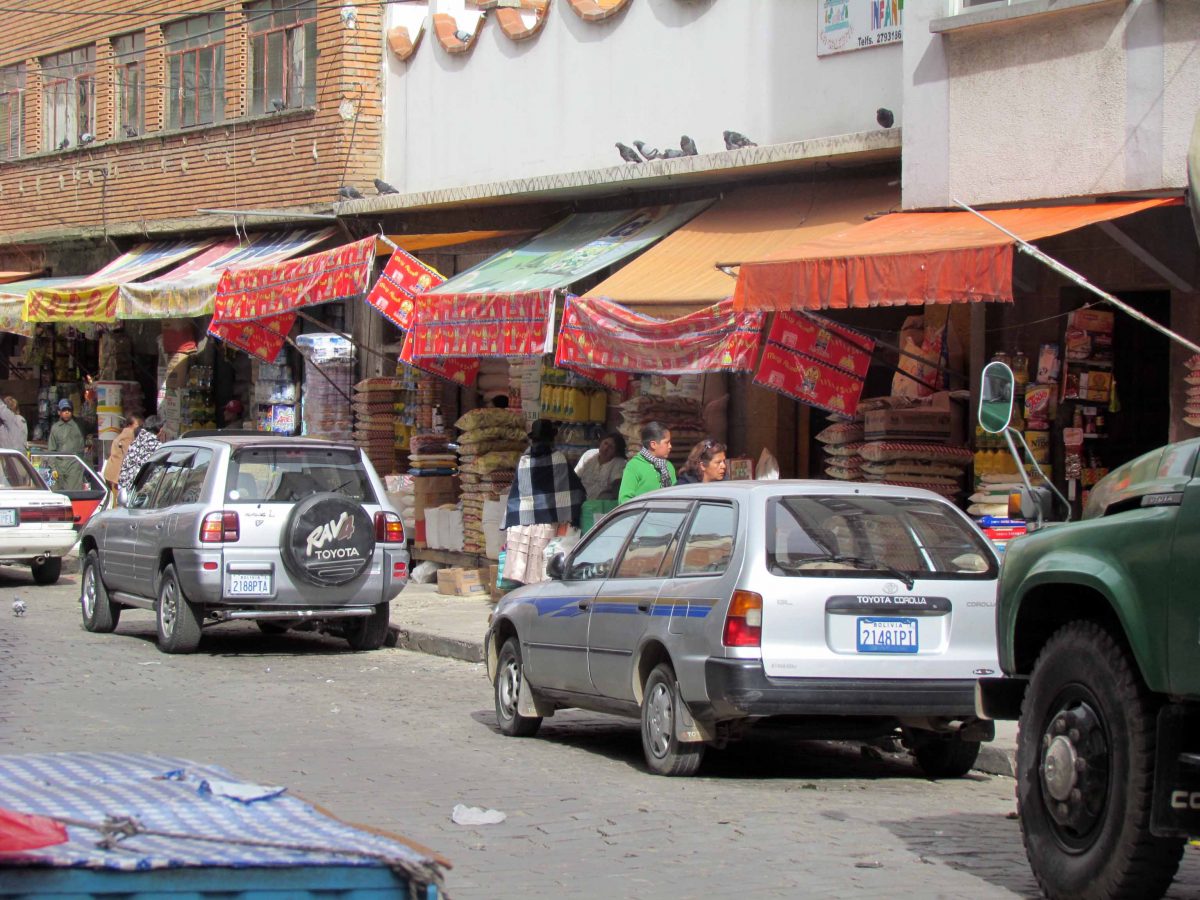

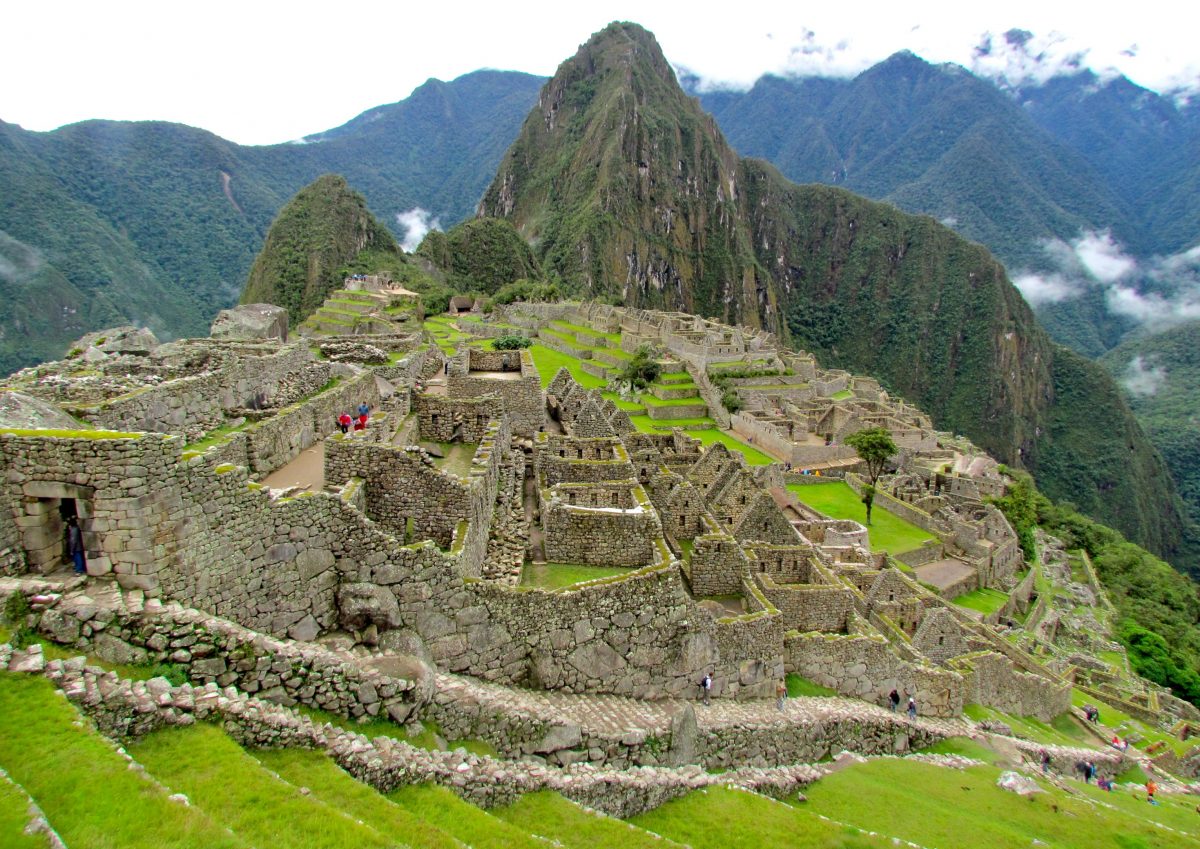
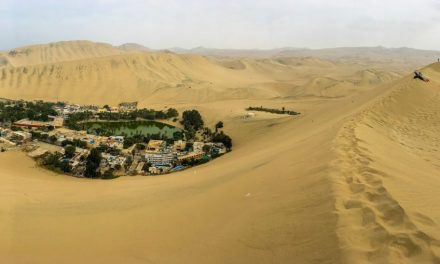



















Thank your for the blog, really good information! I ´m planning a trip to Perú and this tips and information helps me a lot to organize my schedule and time in Perú. Please, continue writing about your trips, your experiences and reccomendations help us a lot, thanks again!
My pleasure! My husband and I are headed for a return trip to Peru in early 2019. We hope to write about all the great things to do in northern Peru. Please let us know how your trip goes!